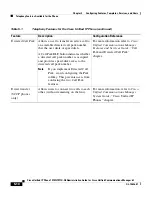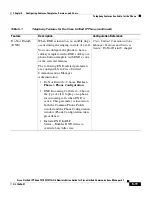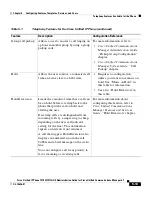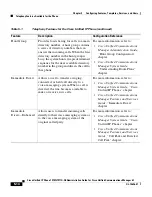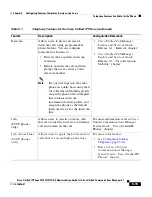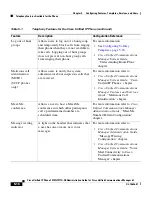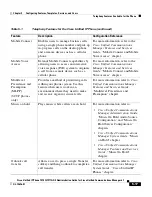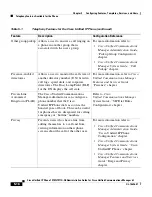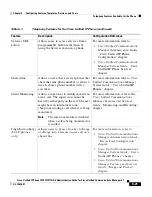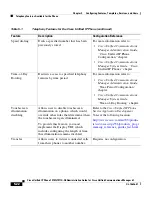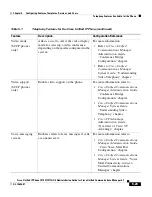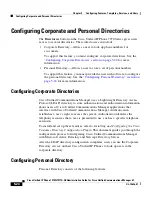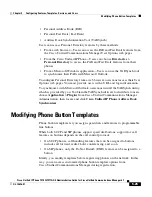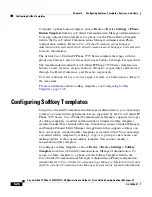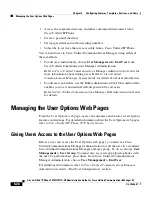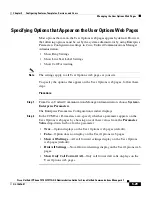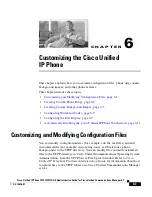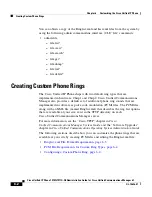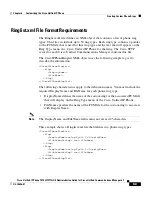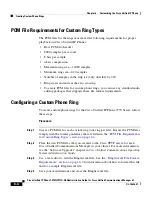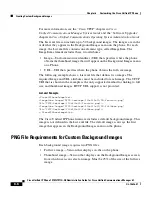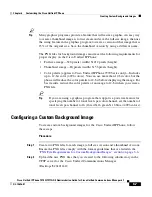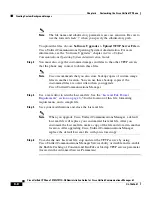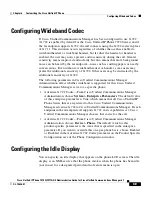
Chapter 5 Configuring Features, Templates, Services, and Users
Configuring Corporate and Personal Directories
5-24
Cisco Unified IP Phone 7970G/7971G-GE Administration Guide for Cisco Unified Communications Manager 6.1
OL-14626-01
Configuring Corporate and Personal Directories
The
Directories
button on the Cisco Unified IP Phone 7970 Series gives users
access to several directories. These directories can include:
•
Corporate Directory—Allows a user to look up phone numbers for
co-workers.
To support this feature, you must configure corporate directories. See the
“Configuring Corporate Directories” section on page 5-24
for more
information.
•
Personal Directory—Allows a user to store a set of personal numbers.
To support this feature, you must provide the user with software to configure
the personal directory. See the
“Configuring Personal Directory” section on
page 5-24
for more information.
Configuring Corporate Directories
Cisco Unified Communications Manager uses a Lightweight Directory Access
Protocol (LDAP) directory to store authentication and authorization information
about users of Cisco Unified Communications Manager applications that
interface with Cisco Unified Communications Manager. Authentication
establishes a user’s right to access the system. Authorization identifies the
telephony resources that a user is permitted to use, such as a specific telephone
extension.
To install and set up these features, refer to
Installing and Configuring the Cisco
Customer Directory Configuration Plugin
. This document guides you through the
configuration process for integrating Cisco Unified Communications Manager
with Microsoft Active Directory and Netscape Directory Server.
After the LDAP directory configuration completes, users can use the Corporate
Directory service on their Cisco Unified IP Phones to look up users in the
corporate directory.
Configuring Personal Directory
Personal Directory consists of the following features:
Summary of Contents for 7970G - IP Phone VoIP
Page 4: ......

